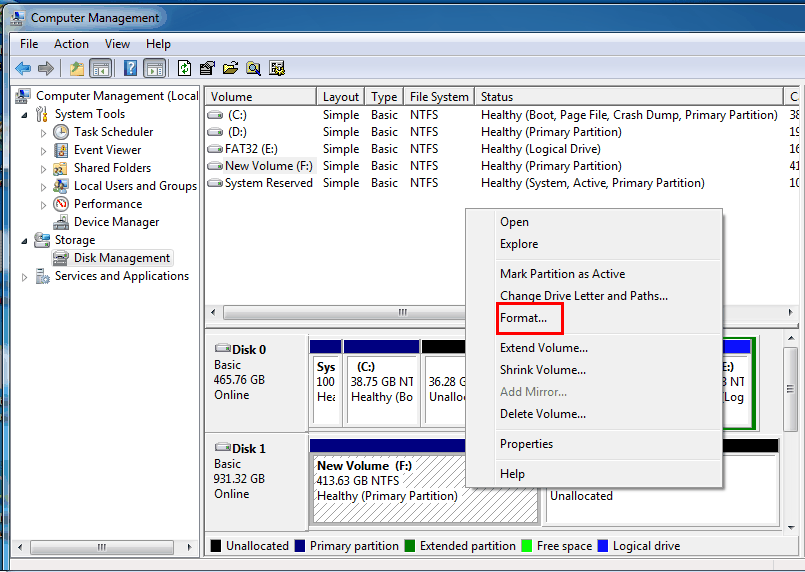

- #REFORMAT A MAC FORMATTED EXTERNAL DRIVE FOR WINDOWS HOW TO#
- #REFORMAT A MAC FORMATTED EXTERNAL DRIVE FOR WINDOWS FOR MAC#
- #REFORMAT A MAC FORMATTED EXTERNAL DRIVE FOR WINDOWS MAC OSX#
Mac OS Extended (encrypted) would be an ideal option if you probably carry your laptop or external drive here and there. Mac OS Extended (Journaled/HFS+): If you didn't update your Mac OS to High Sierra, the default file system on your Mac shoule be Mac OS Extended. What's more, it is compatible with SSD and flash storage devices only. However, it won't be readable and usable on machines that are not running Mac High Sierra, and Windows or Linux PCs.

Architecture design for mac.ĪPFS: This is the default file system in Macs with High Sierra. Which one is right for your circumstance? We'll describe them here, you'll know your choice after reading the details. There are a few file formats you can use, but it depends on the purpose you want to use the drive for. The most important, you should decide which format to use. Part 1: Which File Format You Should Choose?īefore you begin formatting the drive, there are a few things to do.
#REFORMAT A MAC FORMATTED EXTERNAL DRIVE FOR WINDOWS FOR MAC#
Keep in mind that a MAC can generally read other file formats, but for the best performance and to create a bootable disk, formatting exclusively for MAC is required. In a few simple steps you are ready to go and can save your back-up files to the external drive, keeping your information safe and giving you peace of mind.
#REFORMAT A MAC FORMATTED EXTERNAL DRIVE FOR WINDOWS MAC OSX#
Reformatting an external hard drive for use with Mac OSX is not as difficult as it might seem.
#REFORMAT A MAC FORMATTED EXTERNAL DRIVE FOR WINDOWS HOW TO#
It also doesn't integrate with Windows File Explorer-files are available in the HFSExplorer application, and you must copy them elsewhere.Bonus: How to Recover Data from Formatted External Hard Drive on Mac Note that HFSExplorer is read-only, so you can't modify or delete files on your Mac drive. You can then extract files from the HFSExplorer window to your Windows drive. HFSExplorer can automatically locate any connected devices with HFS+ file systems and open them. Connect your Mac-formatted drive to your Windows system, open HFSExplorer, and click File > Load File System From Device. You also need to run the app as an Admin.

We generally recommend against having Java installed, but it's necessary here unless you want to spend money. The developer hasn't updated it since October 2015 due to the arrival of APFS, but it still works on older systems. You can use it to access Mac file systems from Windows without paying a dime. It adds several extra features, including automatic file defragmentation, support for RAID setups, and a way to create Mac ISO files.ĭownload: MacDrive for Windows 10 ($49.99) Other useful features include the ability to create and partition Mac disks direct from your PC, a powerful disk repair feature, and robust security tools.

You will also be able to see your APFS or HFS+ drive directly within File Explorer, allowing easy integration with the rest of the Windows operating system. It acts as a hub for all the Mac drives connected to Windows. The app is focused on the freshly redesigned Disk Management Window. Unlike some options, MacDrive lets you read and write data to your Mac-formatted drive directly from Windows. The app works with APFS drives and HFS+ drives. If you're prepared to spend some money, you don't need to look elsewhere. The first version was released way back in 1996. MacDrive has been one of the go-to apps for a long time.


 0 kommentar(er)
0 kommentar(er)
